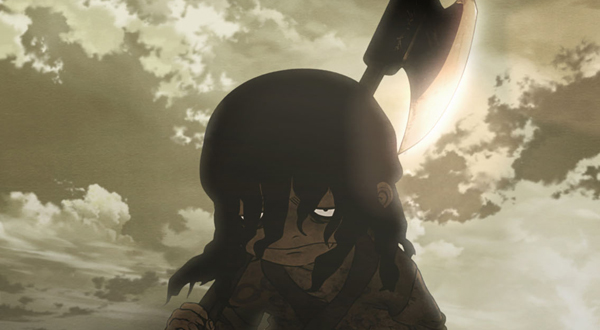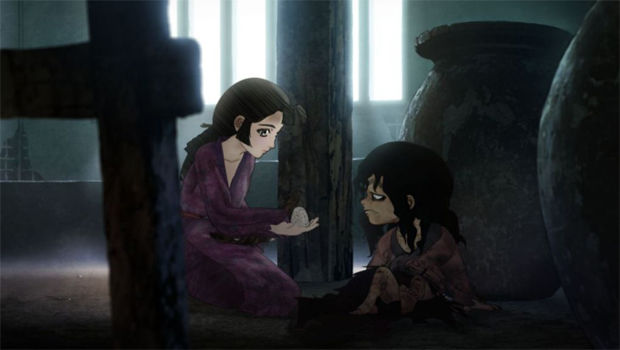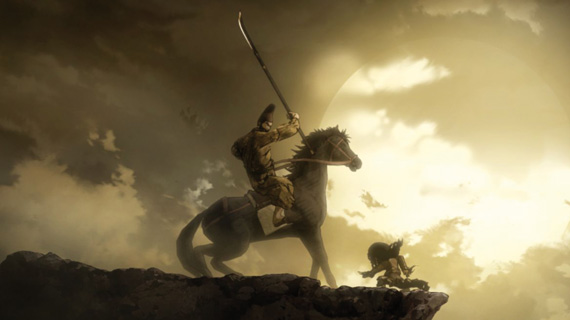ASURA, THE CHILD HUMANITY LEFT BEHIND
ASURA, THE CHILD HUMANITY LEFT BEHIND
George Akiyama’s controversial manga gets the big-screen treatment
Marybel Gervais
If you are an enthusiast of animated films and have to choose only one film to see at Fantasia this year, you must absolutely see Asura. Radically beautiful and sure to break your heart, Asura is undoubtedly one of the best manga adaptations I have ever seen (and anyone who knows me knows that when it comes to this sort of thing, my standards are high!) I have immense love canada cialis no prescription for the source material, which was at once both disturbing and beautiful. Now, the film is sure to viagra fedex be among those one never tires of revisiting.
A young boy named Asura (referring to demons from Indian mythology), is born into an exceedingly harsh vision of Japan. Famine is now commonplace and the most frequent cause of death. Asura’s mother suffers severely from this widespread plague. So order cialis online without prescription much so, that her survival depends on her tolerance for eating human flesh. Malnourished, nothing more than skin and bones, she will fall victim to incurable madness. She will come very close to cooking her own son alive in order to have something to eat. Ashamed of this moment of weakness, and frightened that she might follow through with this plan at a later point, she abandons Asura to fend for himself. Eight years later, we find the young Asura, who now resembles a wild animal, mercilessly chasing and feeding on his own kind. Having never had any proper education, he cannot tell the difference between good and evil. Fortunately, he will cross paths with two key players, a Buddhist monk and Wakasa, a young rice farmer. With their help, Asura will gain a little humanity and finally know maternal love.
Without animation, one would be very limited in trying to adapt a manga as psychologically unsettling and horrifying as Asura. At the time of the comic’s writing (1970), mangaka George Akiyama’s story caused quite a stir. Crude themes such as cannibalism and drawings that left little to the imagination rattled the majority of its readers. It was promptly banned in many regions. Nowadays, it seems that just about anything can be shown on the big screen. In spite of this, some stories remain hard to execute. In Asura, a child is placed in horrible situations. Examples include the scene where the Asura’s mother is sacrificed or the one where he bites right into a raven thrashing about in pain. These scenes are unflinchingly shown in great detail through animation. The flexibilty of this artform is much greater than that of live action shooting when trying to reach a large audience. The need to self-censor is not as strong.
Loyal to the original drawings, Asura holds onto a certain harshness, a crude aspect due to the deliberately still visible pencil strokes. No attempt is made to have the audience forget the work’s origins. Nevertheless, the story takes us into the infinitely painful reality of Asura. How could one not be touched by hearing such a young child say “I never asked to be born into this place. Blame the mother who brought you into this world.” His distress and pain will leave no one unaffected.
It was a big undertaking for director Kei’ichi Sato and writer Ikuko Takahashi to adapt a manga so known for its harshness. They did so with immense skill. Asura transports us into a world that is not so different from ours and is thus fairly plausible. This is what’s most frightening about all of this, that a child is braving the brutal challenges that confront young Asura.
http://youtu.be/8ZYGa0B84EU
_________
ASURA will have its Canadian premiere August 1st at 19:40 Concordia’s Hall theater with producer Yoshi Ikezawa in attendance.

 August 1, 2012
August 1, 2012  No Comments
No Comments









